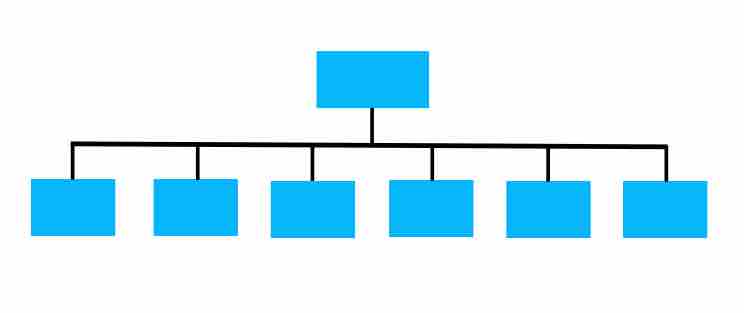Links within Hierarchies
Hierarchies can be linked in several different ways. A hierarchy can link entities either directly or indirectly; it can also link entities either vertically or horizontally. The only direct links in a hierarchy are to a person's immediate superior or subordinates. Parts of the hierarchy that are not linked vertically to one another can be horizontally linked through a path by traveling up the hierarchy; this path eventually reaches a common direct or indirect superior and then travels down the hierarchy again. An example of this would be two colleagues who each report to a common superior but have the same relative amount of authority in the organization.
Flat Hierarchies
Flat (or horizontal) organizational structures have few or no levels of intervening management between staff and managers. This "flattened" hierarchy promotes employee involvement through a decentralized decision-making process. The idea is that well-trained workers will be more productive when they are directly involved in the decision-making process rather than closely supervised by many layers of management.

Flat organization chart
This diagram illustrates the structure of a flat organization: there is no low- or mid-level management—just one manager and the rest of the staff.
Advantages of Flattened Hierarchies
Flat structures empower each individual within the company to be involved in decision-making processes. This allows for a great deal of creative discussion and operational diversity and tends to create great variance in new ideas. By elevating the level of responsibility of baseline employees and eliminating layers of middle management, comments and feedback can quickly reach all personnel involved in decisions. Response to customer feedback can be carried out more rapidly.
This type of structure generally works best in smaller organizations or individual units within larger organizations. Start-up companies, "mom and pop shops," and other small independent businesses are the most common examples of a flat structure.
Disadvantages of Flattened Hierarchies
Flat organizations are difficult to maintain as companies grow larger and more complex. When organizations reach a critical size, they can retain a streamlined structure; however, they cannot keep a completely flat manager-to-staff hierarchy without impacting productivity. Certain financial responsibilities may also require a traditional hierarchical structure. While the flat structure can foster employee empowerment, involvement, and creativity, it can also create inefficiency in decision-making processes. Some theorize that flat organizations become more traditionally hierarchical when they gear themselves more toward productivity.
Because the interaction between workers is more frequent, this organizational structure generally depends on a more personal relationship between workers and managers. As a result, the structure can be more time-consuming to build than a traditional hierarchical model.